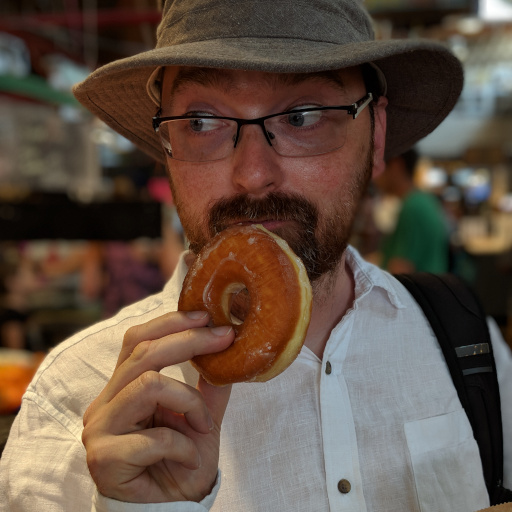I’m working on a some materials for a class wherein I’ll be teaching some young, wide-eyed Windows nerds about Linux and we’re including a section we’re calling “foot guns”. Basically it’s ways you might shoot yourself in the foot while meddling with your newfound Linux powers.
I’ve got the usual forgetting the . in lines like this:
$ rm -rf ./bin
As well as a bunch of other fun stories like that one time I mounted my Linux home folder into my Windows machine, forgot I did that, then deleted a parent folder.
You know, the war stories.
Tell me yours. I wanna share your mistakes so that they can learn from them.
Fun (?) side note: somehow, my entire ${HOME}/projects folder has been deleted like… just now, and I have no idea how it happened. I may have a terrible new story to add if I figure it out.


I tried to install an OS to a USB stick. This is Kubuntu specific.
You need to create a GPT partition on the stick, then you should be able to just use the installer and install on another USB stick.
I went through it, selected the usb stick… was not sure if everything was right and went a menu back, was correct, went forth again, past the install target selection and installed.
Well… turns out the Kubuntu installer (Calamares) selects the first disk always. And that selection seems to reset to default when going a menu back…
I deleted my complete normal disk, with like everything I had.
No Backup no mercy. Luckily did one only a few weeks before. The first since half a year! Damn… had my uni stuff on Nextcloud, a lot of personal stuff synced to my phone with syncthing.
I was gonna recommend kubuntu for a first time user, seems a bit of a hassle then doesn’t it?
I mean if you actually want to overwrite the main SSD this is okay. Calamares is very nice too.
Kubuntu stays on Plasma 5 forever so I highly recommend against it. There are many bugs that will not get fixed, the fixes are only in Plasma 6.
I recommend Fedora Kinoite. Use Flatpaks, layer the packages you dont need. Add rpmfusion and layer
libavcodec-freeworldto get video playback working.I broke all KDE distros, Kubuntu included. I wouldnt use anything other than Fedora Kinoite, nor want to maintain that mess. Have a look at my latest post for some explanations.
I thought kubuntu was fairly stable
Yes it is stable. Stable means you ship packages that dont change. Which in general is a really bad idea if you want your issues to be solved.
The timing was just really bad, as Plasma6 now is perfectly usable. Bad decision if you ask me.
At least on Fedora Plasma6 is really good.
Thinking of recommending nobara os. It seems pretty good now that it uses kde
It is a very experimental repackaging of Fedora, ripping out SELinux and replacing that with Apparmor, which will be way less secure as it is not the focus. They add a ton of custom stuff but the Distro is still mutable.
If you want that amount of tweaking, I recommend Bazzite. There you will have reproducible bugs and rollbacks.
I think it should be fine though, if not, kde neon also seems to be good.
I also used and broke KDE Neon. Especially the transition to Plasma 6 must have been horrendous, as there where tons of people with completely broken systems.
But yes I suppose it is a good distro? But I switched away from it too.